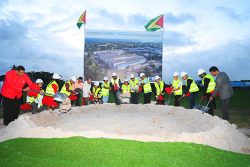The world’s current technological frontier is space. As a matter of fact, this has been so since the Second World War, and was given an additional impetus by Soviet-US competition. The USSR won the first round with the eventual launching of Yuri Gagarin into space, but the Americans finally overtook their rivals after landing cosmonauts on the moon. Whatever the tensions in the US-Russian relationship nowadays, the two sides cooperate where space is concerned, especially through the agency of the International Space Station, first sent up by Russia.
According to Wikipedia, as of 2018 there were 72 different government space agencies in existence in the world, seven of which have full launch capabilities, namely, the French National Centre for Space Studies, the China National Space Administration, the European Space Agency, the Indian Space Research Organisation, the Japan Aerospace Exploration Agency, the (US) National Aeronautics and Space Adminis-tration (NASA), and the Russian Federal Space Agency. China has now become a big-time player, sending a human being into space, an unmanned vehicle to the far side of the moon and setting down a rover on Mars.
In this part of the world the launching of rockets into space is the province of the European Space Agency’s port in French Guiana, where the Ariane space programme has its base. Some of the profits from that enterprise have been ploughed back into the territory, which is a French Département, i.e. a region of France, although as far as can be seen from Georgetown this does not seem to have provided a substantial stimulus to scientific education or local engineering.
Guyana had its own flirtation with rocket launches in 1999-2000 when Beal Aerospace of Texas was negotiating for a tract of land in the Waini. The plan was for Beal to buy around 40 square miles of swampy land and then lease from the Guyana Government a buffer zone which was around three times as large. The scheme was not without its critics. |In the first place it would have necessitated moving 54 Warrau families out of the area, which naturally produced an outcry from the Amerindian People’s Association. The APA also pointed out that many other Indigenous people not domiciled in the area in question would also lose their right to hunt, fish and gather thatch and timber there. In addition it would interfere with the harvesting of manicole palm which is found in the Waini basin and which provided a livelihood for many inhabitants of the wider area.
Then there was the matter of the destruction of the archaeological record in the Waini. The late archaeologist Denis Williams, who pioneered research into ancient peoples that lived in this and contiguous parts of the North West, said settlement here dated back at least 7,000 years, and that it was probably associated with the Warrau, Guyana’s first people. Terry Roopnaraine, an anthropologist at the University of Cambridge was quoted at the time as saying, “Building a rocket launch site will very probably destroy the archaeological record here before it has been fully explored.”
Not everyone was opposed. Then Prime Minister Samuel Hinds lauded the project as “a quantum leap for Guyana into the new millennium.” Then there were those who had an eye on the indirect security it would imply against the threat from Venezuela. Certainly Caracas had no doubt about what was involved, then President Hugo Chávez calling it a “Trojan Horse” which undermined Venezuelan sovereignty on the eastern flank by inserting an American military presence there. When the project was abandoned, Venezuela was elated, the Foreign Minister describing it as a “colonialist arrangement … that would provide cover for U.S. military expansion in the region.”
While Mr Chávez is invariably blamed for the collapse of the deal, albeit indirectly, it is difficult to know whether this is the fully case. Certainly Beal would have known about the geopolitical situation before it opened negotiations. It wanted to come here because Guyana is close to the equator, which is the best place to launch satellites into geostationary orbit above the equator. Added to that, the launch route eastwards would have been over open ocean in the event a mishap occurred.
The factors accounting for the abandonment of the project and the closing down of the Beal company itself related at least partly to the fact that US government permission was required for the export of missile technology to another jurisdiction, and there was no certainty that this would be forthcoming. Washington had insisted on the sale of land around the launch pad, and not its leasing, despite the fact that Guyana has not traditionally sold land to foreign entities. It may be, however, that this concession notwithstanding, the US government remained uneasy about the belligerent statements emanating from Miraflores, and was reluctant to grant a permit.
A significant development was the fact that NASA moved to go into direct competition with the private sector space companies by subsidising competing launch systems, which was paid for by US taxpayers. Mr Beal was reported as testifying to a Congressional subcommittee about the risk NASA’s new initiative posed to private space development, since it had always focused on human launch systems and not non-human ones such as cargo and commercial satellites. Congress still funded the programme nonetheless. It may be, therefore, that Washington holds as big a responsibility for the collapse of the Beal project and Beal itself as does Caracas.
The Mirror at the time described it as a great deal which would provide employment opportunities, accelerate tourism development and project an image of a country open to advanced technology investment. Whether in reality it would have achieved any of those things, let alone stimulate science and technology development locally may never be known. Perhaps in terms of the last-mentioned spin-offs, we would have been little better off than French Guiana.
But there are some other developing countries in Africa, no less, where the media regale us with stories of famine and war and terrorism, that have entered the space race on their own account without any initial ‘advanced technology investment’. The Economist reports how following Hurricane Katrina in 2005 American officials urgently needed satellite pictures so they would have a better idea of what they were confronting. They got these not from NASA satellites, or indeed from any of those belonging to other rich countries, but from a small Nigerian spacecraft which had been launched by Russia two years earlier.
This was Nigeria’s first satellite, and only the second to be launched by a nation in sub-Saharan Africa; by 2019 there were 41 African satellites in orbit. The periodical said there were now 20 African countries which had space programmes, and it reports African governments as arguing that investments in space programmes helped to build local skills which could attract investment and spill over into other sectors of the economy. In other words, in terms of sequence, it is the reverse of the Beal arrangements.
The first African satellite was built by students at Stellenbosch University in South Africa, and got a free ride on a NASA rocket. It was very cheap as these things go, but the students’ efforts have paid off. Several of them went on to be employed at Dragonfly Aerospace in Stellenbosch which is expecting to build 48 small satellites a year. A far more grandiose scheme has now been inaugurated in the form of an internationally funded radio telescope being built in South Africa which the Economist says will bring in almost US$2.3 billion in terms of investment, and is creating thousands of jobs. It is also motivating young people to study engineering.
No one is suggesting that UG students could replicate the efforts of their Stellenbosch University counterparts for reasons which are only too well known. As it is we have now progressed to looking at the possible spin-off benefits from oil technology, which has a limited lifespan, while in the meantime some African nations have their eyes fixed on the stars.
The latest addition to the African satellite constellation is from Mauritius, a country which has a few parallels with this one and in addition is a sugar producer. Its satellite went up on June 3rd this year. If Guyana has not been able to do what Mauritius and Ghana have done, we have in the final analysis to blame our politicians; after all this is a resource rich country, not a poor one. But our fractious, power-obsessed, ethnically-preoccupied, small-minded political operators have stymied initiative over many decades and have driven out the professional and trained classes who could help us find a niche in an unforgiving technological world.








